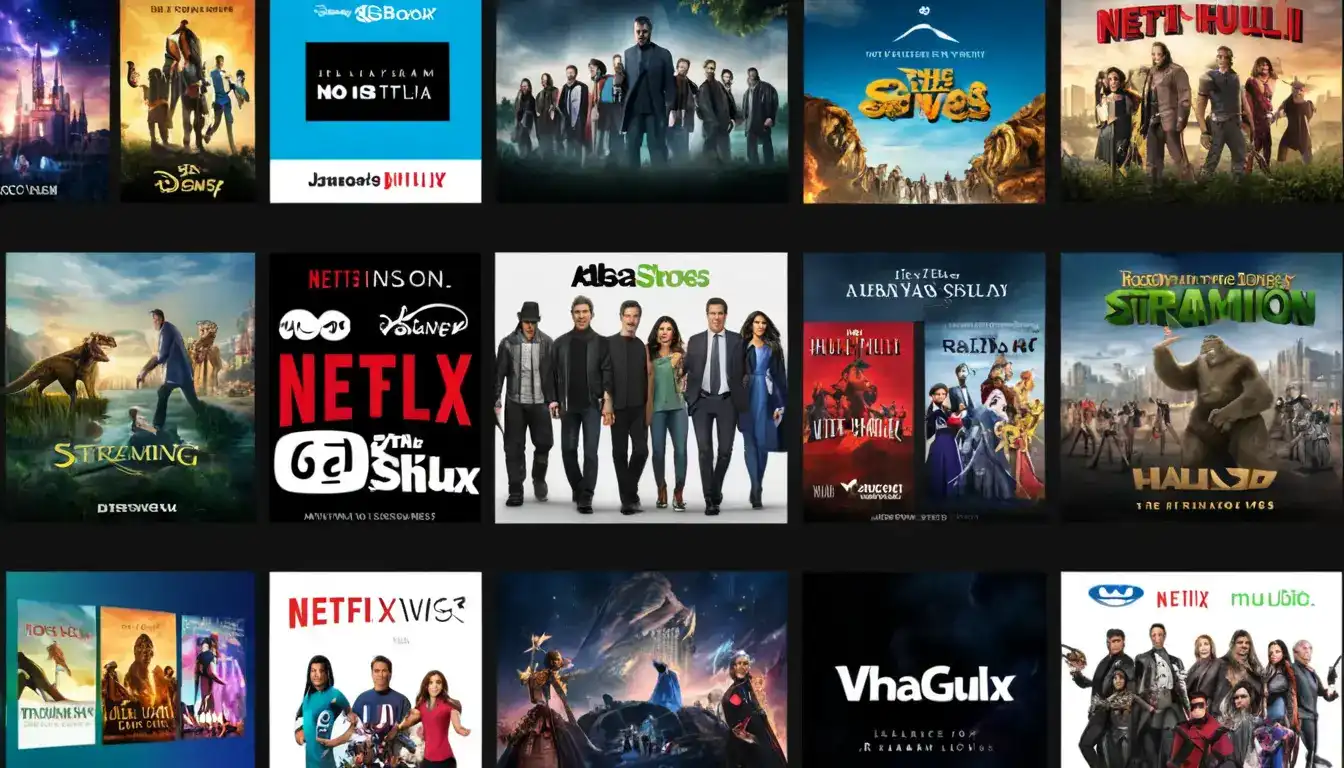Navigating Mortgage Refinance Rates: Your Ultimate Guide
Emily Willis

Photo: Navigating Mortgage Refinance Rates: Your Ultimate Guide
In a world where financial landscapes are constantly shifting, understanding the nuances of mortgage refinance rates is more crucial than ever. For homeowners, the prospect of lowering monthly payments, accessing home equity, or even shortening loan terms can be incredibly appealing. But what exactly are mortgage refinance rates, and how can you navigate this complex terrain to secure the best possible outcome?
This in-depth guide will unravel the intricacies of mortgage refinance rates, offering actionable insights and expert advice to empower you in making informed decisions. We'll delve into the factors influencing these rates, explore different refinancing options, and provide practical tips to optimize your refinancing journey.
Understanding Mortgage Refinance Rates: Your Gateway to Financial Optimization
At its core, a mortgage refinance involves replacing your existing home loan with a new one, ideally with more favorable terms. The mortgage refinance rate is the interest rate attached to this new loan. It’s the single most significant factor determining your monthly payments and the total cost of your mortgage over its lifetime.
Think of it this way: if your original mortgage had a 6% interest rate, and current market conditions allow you to refinance at 4%, you could potentially save thousands of dollars over the life of the loan. These savings can free up cash for other financial goals, such as investments, education, or even that much-anticipated home renovation project.
Why Do Mortgage Refinance Rates Matter So Much?
The impact of even a slight change in your mortgage refinance rate can be substantial. Consider a $300,000 mortgage over 30 years.
- At 6% interest: Your monthly principal and interest payment would be approximately $1,798.
- At 4% interest: Your monthly principal and interest payment would drop to around $1,432.
That's a difference of $366 per month, or over $4,300 annually! Over the 30-year loan term, these savings can accumulate to over $130,000. This stark difference highlights why closely monitoring and understanding mortgage refinance rates is paramount for any homeowner.
Deciphering the Factors Influencing Mortgage Refinance Rates
Several dynamic factors converge to shape the mortgage refinance rates you'll be offered. Understanding these influences is key to strategically timing your refinance application and negotiating the most favorable terms.
1. The Federal Reserve's Monetary Policy
While the Federal Reserve doesn't directly set mortgage rates, its actions significantly impact them. When the Fed raises or lowers the federal funds rate, it influences the cost of borrowing for banks. This, in turn, trickles down to consumer loan products, including mortgages. Generally, when the Fed signals a hawkish stance (potential rate hikes), mortgage rates tend to rise. Conversely, a dovish stance (potential rate cuts) often leads to lower mortgage rates.
2. Economic Indicators: A Barometer of Rate Movements
The broader economic climate plays a critical role. Key economic indicators that influence mortgage refinance rates include:
- Inflation: High inflation erodes the purchasing power of money, leading lenders to demand higher interest rates to compensate for future inflation risk.
- Employment Data: Strong job growth and low unemployment often indicate a healthy economy, which can put upward pressure on rates as demand for loans increases.
- GDP Growth: A robust Gross Domestic Product (GDP) suggests economic expansion, which can also contribute to rising interest rates.
- Housing Market Trends: Supply and demand dynamics within the housing market can also subtly influence refinance rates. A highly competitive housing market might see rates fluctuate differently than a stagnant one.
3. Your Personal Financial Profile: The Lender's Perspective
Even with favorable market conditions, your individual financial health is a major determinant of the mortgage refinance rates you qualify for. Lenders assess your risk profile based on:
- Credit Score: A higher credit score (typically 740 and above) indicates a lower risk to lenders, often translating to the most competitive refinance rates. Conversely, a lower score may result in a higher interest rate or even a denial.
- Debt-to-Income (DTI) Ratio: This ratio compares your total monthly debt payments to your gross monthly income. A lower DTI (ideally below 43%) demonstrates your ability to manage debt responsibly, making you a more attractive borrower.
- Loan-to-Value (LTV) Ratio: This ratio compares your loan amount to your home's appraised value. A lower LTV (meaning more equity in your home) reduces the lender's risk and can lead to better rates. For example, if your home is worth $400,000 and you owe $200,000, your LTV is 50%.
- Loan Type and Term: The type of loan (e.g., fixed-rate vs. adjustable-rate) and the loan term (e.g., 15-year vs. 30-year) also influence rates. Shorter loan terms typically come with lower interest rates as lenders are exposed to less long-term risk.
4. Lender-Specific Policies and Fees
Each lender has its own internal policies, risk assessments, and overhead costs, which can lead to variations in the mortgage refinance rates they offer. Furthermore, closing costs and lender fees can impact the overall cost of your refinance, even if the interest rate seems low. It's crucial to compare not just interest rates but also the total cost of refinancing across multiple lenders.
Types of Mortgage Refinance Options: Finding Your Best Fit
Refinancing isn't a one-size-fits-all solution. Different types of refinances cater to distinct financial goals. Understanding these options is crucial for making an informed decision about your mortgage refinance rates.
1. Rate-and-Term Refinance
This is the most common type of refinance. With a rate-and-term refinance, you replace your existing mortgage with a new one that has a lower interest rate, a shorter loan term, or both. The primary goal is to reduce your monthly payments or pay off your mortgage faster. You don't take out any cash from your home equity with this option.
- Benefit: Lower monthly payments, reduced total interest paid over the loan term.
- Ideal for: Homeowners looking to save money on interest and improve their monthly cash flow.
2. Cash-Out Refinance
A cash-out refinance allows you to borrow more than you currently owe on your mortgage, converting a portion of your home equity into liquid cash. You then receive the difference between your new loan amount and your old loan payoff in a lump sum. This cash can be used for various purposes, such as home improvements, debt consolidation, or education expenses.
- Benefit: Access to home equity for large expenses.
- Ideal for: Homeowners with significant equity who need a substantial amount of cash for specific purposes.
- Consideration: Your new loan amount will be higher, potentially leading to higher monthly payments and a longer repayment period.
3. Streamline Refinance (FHA, VA, USDA)
For homeowners with government-backed loans (FHA, VA, USDA), streamline refinance options offer a simplified process with less paperwork and often no appraisal required. These programs are designed to make it easier for eligible borrowers to reduce their interest rates.
- Benefit: Faster, less complex refinancing process, potentially lower closing costs.
- Ideal for: Existing FHA, VA, or USDA loan holders looking to lower their interest rate with minimal hassle.
Practical Steps to Secure the Best Mortgage Refinance Rates
Navigating the refinancing process can seem daunting, but by following a structured approach, you can significantly improve your chances of securing the most favorable mortgage refinance rates.
- Assess Your Goals: Before you even start looking at rates, clearly define why you want to refinance. Are you aiming for lower monthly payments, a shorter loan term, or cash out? Your goals will dictate the best refinancing option for you.
Check Your Credit Score: Your credit score is a major factor. Obtain a copy of your credit report from all three major credit bureaus (Experian, Equifax, TransUnion) and dispute any inaccuracies. Work on improving your score if needed before applying.
- Gather Necessary Documents: Be prepared with financial documentation, including:
- Pay stubs and W-2s (or tax returns if self-employed)
- Bank statements
- Current mortgage statements
- Property tax statements
- Homeowners insurance policy
Shop Around and Compare Offers: This is perhaps the most crucial step. Don't settle for the first offer you receive. Contact multiple lenders—banks, credit unions, and online mortgage brokers—to compare their mortgage refinance rates, fees, and overall terms. Use online comparison tools, but always get personalized quotes. A 2022 study by Freddie Mac indicated that borrowers who get at least four mortgage offers can save an average of $2,000 over the life of the loan.
- Understand All Costs Involved: Beyond the interest rate, consider closing costs, appraisal fees, origination fees, and other charges. These can significantly impact the overall cost-effectiveness of your refinance. Ask for a Loan Estimate from each lender, which breaks down all costs.
Lock In Your Rate: Once you find a competitive rate, consider locking it in. A rate lock guarantees that your interest rate won't change between the time you apply and your loan closing, protecting you from market fluctuations.
- Be Patient and Responsive: The refinancing process takes time. Be prepared for paperwork and respond promptly to any requests for information from your lender to avoid delays.
When Is the Right Time to Refinance?
Deciding when to refinance hinges on several factors, including current mortgage refinance rates, your financial situation, and your long-term goals.
- Lower Interest Rates: If current rates are significantly lower than your existing mortgage rate (a general rule of thumb is a difference of at least 0.75% to 1%), refinancing could be beneficial.
- Improved Credit Score: If your credit score has improved substantially since you took out your original mortgage, you may qualify for a better rate.
- Shorter Loan Term: If you can afford higher monthly payments, refinancing to a shorter term (e.g., from 30 to 15 years) can save you a substantial amount in interest over the life of the loan.
- Debt Consolidation: If you have high-interest debt (e.g., credit card debt), a cash-out refinance might provide a lower-interest way to consolidate these debts.
- Eliminating PMI: If you have Private Mortgage Insurance (PMI) and your home equity has reached 20% or more, refinancing may allow you to eliminate this additional cost.
Frequently Asked Questions About Mortgage Refinance Rates
Q1: How often do mortgage refinance rates change?
Mortgage refinance rates are highly dynamic and can change daily, or even multiple times a day, based on market conditions, economic data releases, and global events.
Q2: What is a "no-closing-cost" refinance?
A "no-closing-cost" refinance means you don't pay upfront closing costs. Instead, these costs are typically rolled into your new loan amount or covered by a slightly higher interest rate. While appealing, it's essential to understand that you are still paying these costs, just in a different way.
Q3: Will refinancing hurt my credit score?
Initially, applying for a refinance will result in a hard inquiry on your credit report, which can slightly lower your score for a short period. However, the long-term benefits of a lower interest rate and more manageable payments often outweigh this temporary dip. To minimize impact, complete all your rate shopping within a short window (e.g., 14-45 days) so that multiple inquiries are treated as a single inquiry.
Q4: How much equity do I need to refinance?
Generally, lenders prefer borrowers to have at least 20% equity in their homes for a conventional refinance. However, some programs, like FHA streamline refinances, may have lower equity requirements. For a cash-out refinance, you typically need more substantial equity.
Q5: Is it always a good idea to refinance when rates drop?
Not necessarily. While lower rates are attractive, you need to calculate the break-even point – how long it will take for the savings from the lower interest rate to offset the closing costs of the refinance. If you plan to move before reaching that break-even point, refinancing might not be financially advantageous.
Conclusion: Empowering Your Refinance Journey
Understanding mortgage refinance rates is not just about crunching numbers; it's about empowering yourself to make strategic financial decisions that can significantly impact your long-term well-being. By staying informed about market trends, optimizing your personal financial profile, and diligently comparing offers from multiple lenders, you can unlock substantial savings and achieve your homeownership goals.
Don't let the complexities deter you. Take the first step today: analyze your current mortgage, explore the available refinance options, and start comparing rates. Your future self – and your wallet – will thank you.
Do you have questions about specific mortgage refinance rates or want to share your refinancing experience? Leave a comment below! We'd love to hear from you and continue the conversation.
Latest ✨
View AllUncover the bond market's true nature. Is it a safe haven? Learn its benefits, inherent risks, and how to confidently integrate bonds into your portfolio.
Emily Willis
Discover the innovation economy: how new ideas, tech, and business models drive global growth and define future success.
Emily Willis
sustainable travel and highlights three destinations - Costa Rica, Iceland, and New Zealand - where eco-conscious adventures are prioritized. It describes the eco-friendly activities and responsible tourism practices in each destination, as well as providing additional tips for sustainable travel such as packing light, choosing eco-friendly transportation, and embracing local cuisine.
Emily Willis
Blockchain technology, initially associated with cryptocurrencies, has expanded to have diverse applications across industries. It is a decentralized digital ledger that ensures secure, transparent, and immutable transactions. Beyond cryptocurrency, blockchain has been applied to supply chain management, healthcare, voting systems, smart contracts, digital identity verification, real estate transactions, and supply chain finance. Future trends include enhancing interoperability, addressing scalability issues, and exploring regulatory frameworks. Overall, blockchain technology has the potential to revolutionize various sectors by enhancing efficiency, security, and trust in operations.
Emily Willis
Business
View All
June 8, 2025
Top Sales Techniques to MasterTransform your sales approach. Discover top modern sales techniques, including consultative selling, to connect, persuade, and build lasting customer relationsh...
Emily Willis

June 8, 2025
Scale Your Business SmartlyScale your business smartly for sustainable growth. Learn strategies to increase revenue efficiently, avoid common pitfalls, and build a robust enterprise.
Emily Willis

June 9, 2025
Budgeting Tips for Business ExpensesMaster your business finances! Discover essential budgeting tips to control expenses, improve cash flow, and drive sustainable growth for your enterprise.
Emily Willis
Economy
View AllIn today's rapidly changing economic landscape, innovation and resilience are more important than ever. Innovation drives progress and competitiveness by creating new ideas and solutions to meet market needs. Resilience helps businesses withstand shocks and bounce back from setbacks by planning strategically and diversifying resources.
Read MoreIs globalization reversing? Unpack key economic trends, trade protectionism, and the shift to "slowbalization" shaping our interconnected world.
Read MoreDive into the economics of monopolies. Learn how these single-rule markets form, their characteristics, and their impact on prices, quality, and growth.
Read MoreEntertainment
View All
August 4, 2024
Profiles of Famous Artists Who Inspire the Younger Generationthe inspirational aspects of famous artists such as Vincent van Gogh, Frida Kahlo, Pablo Picasso, Banksy, Yayoi Kusama, Jean-Michel Basquiat, Georgia O'Keeffe, Andy Warhol, Kehinde Wiley, and Ai Weiwei. It highlights their perseverance, innovation, authenticity, social commentary, mental health advocacy, and representation, among other qualities, and how these aspects continue to inspire young artists to pursue their creative dreams.
Emily Willis

August 4, 2024
The Evolution of Streaming Services Such as Netflix, Disney+, Hulu, and the Implications for the Traditional Entertainment IndustryThe rise of streaming services has revolutionized the entertainment industry, offering on-demand access to a vast library of content through internet-connected devices. Platforms like Netflix, Disney+, and Hulu have diversified their content libraries, reshaped consumer behavior, and challenged traditional distribution models. Technological advancements have enhanced streaming experiences, while economic and cultural implications have led to global market expansion and increased investment in original content production. The future of the streaming industry will be shaped by competition, convergence of media and technology, and the need for adaptation to changing consumer preferences. Embracing digital transformation and strategic partnerships will be crucial for stakeholders in navigating the evolving landscape of modern entertainment.
Emily Willis

August 4, 2024
The Evolution of Digital Distribution in the Music Industry: Challenges and OpportunitiesThe music industry has been transformed by digital distribution, which allows quick access to a vast catalog of music through streaming services and online stores.
Emily Willis
Health
View AllPreventive healthcare focuses on strategies to prevent disease and maintain well-being, rather than just treating illnesses after they arise. It helps identify risk factors early on, allowing for interventions that can prevent or delay the onset of chronic diseases.
Emily Willis
The healthcare landscape is being transformed by technological advancements, with telehealth and remote care providing convenient access to healthcare services. Artificial intelligence is revolutionizing diagnostics, personalized medicine, and drug discovery. Wearable technology is empowering patients to take control of their health.
Emily Willis
The focus of nutrition advice is shifting towards personalized nutrition, taking into account individual genetic makeup, lifestyle, and health goals to create a customized eating plan. This approach can lead to improved health outcomes, enhanced nutrient absorption, increased motivation, and targeted support for specific health concerns.
Emily Willis
Trending 🔥
View All
1
2
3
4
5
7
8
9
10
Sports
View AllAugust 5, 2024
Celebrating Sports Legends: Honoring Iconic Figures and Their Enduring Impact
Read MoreAugust 4, 2024
Benefits of Cross Training for Athletes: Improves Performance and Prevents Injuries
Read MoreTechnology
View All
August 5, 2024
Tips for Implementing Cloud Computing Safely and Efficiently
Cloud computing is essential for modern businesses, offering cost savings, scalability, and improved collaboration. Implementing cloud computing requires careful planning to ensure safety and efficiency. Tips for safe and efficient implementation include conducting a needs assessment, choosing the right cloud service model, prioritizing security, planning for data migration, optimizing costs, training your team, implementing backup and recovery solutions, monitoring performance, planning for scalability, and staying updated with industry trends.

August 4, 2024
Role of Cloud Computing Technology in Modern Business
Cloud computing technology has become essential for modern businesses, offering cost efficiency, scalability, and flexibility. It enables streamlined processes, enhanced productivity, and improved collaboration among employees. Cloud computing also ensures data security, disaster recovery, and business continuity. By migrating to the cloud, businesses can streamline IT operations, enhance customer experiences, access advanced technologies, and reach a global audience. Real-world applications of cloud computing include e-commerce, healthcare, financial services, manufacturing, and education.

August 5, 2024
The Most Common Types of Cybersecurity Threats
In today's digital age, cybersecurity threats are increasing in sophistication and frequency. It is important for businesses and individuals to be aware of these threats in order to protect sensitive information and maintain privacy. Understanding common types of cybersecurity threats is the first step in safeguarding against them.

August 4, 2024
Data Security in the Digital Era: Challenges and Solutions
importance of data security in the digital age, highlighting challenges such as cyberattacks, human error, weak passwords, and outdated systems. It also provides solutions to enhance data security, including encryption, strong password policies, multi-factor authentication, regular software updates, employee training, access controls, data backup, incident response plans, security audits, and advanced security technologies. These measures are essential for protecting sensitive information and preventing unauthorized access and breaches.




















